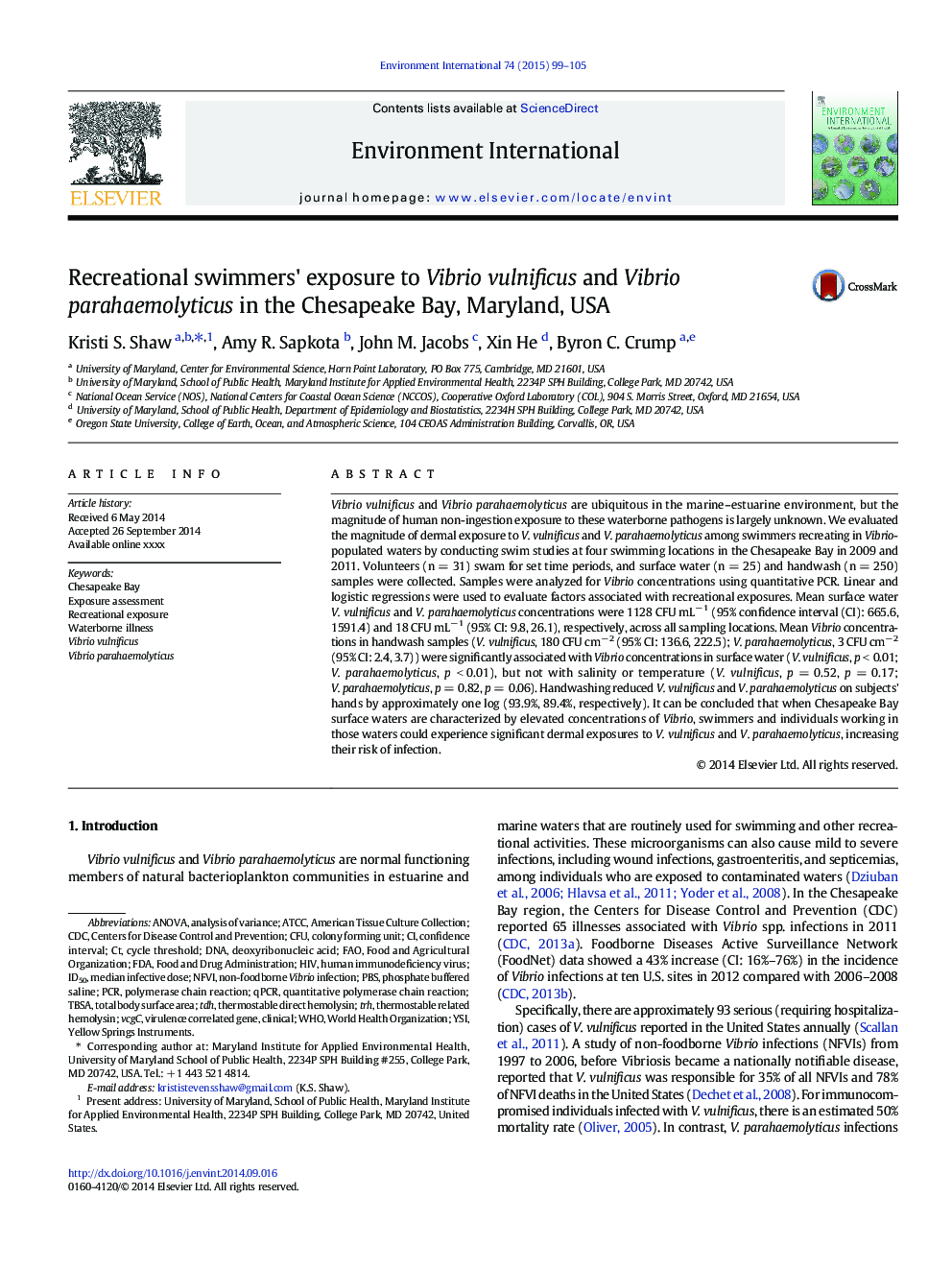| Article ID | Journal | Published Year | Pages | File Type |
|---|---|---|---|---|
| 6313891 | Environment International | 2015 | 7 Pages |
Abstract
Vibrio vulnificus and Vibrio parahaemolyticus are ubiquitous in the marine-estuarine environment, but the magnitude of human non-ingestion exposure to these waterborne pathogens is largely unknown. We evaluated the magnitude of dermal exposure to V. vulnificus and V. parahaemolyticus among swimmers recreating in Vibrio-populated waters by conducting swim studies at four swimming locations in the Chesapeake Bay in 2009 and 2011. Volunteers (n = 31) swam for set time periods, and surface water (n = 25) and handwash (n = 250) samples were collected. Samples were analyzed for Vibrio concentrations using quantitative PCR. Linear and logistic regressions were used to evaluate factors associated with recreational exposures. Mean surface water V. vulnificus and V. parahaemolyticus concentrations were 1128 CFU mLâ 1 (95% confidence interval (CI): 665.6, 1591.4) and 18 CFU mLâ 1 (95% CI: 9.8, 26.1), respectively, across all sampling locations. Mean Vibrio concentrations in handwash samples (V. vulnificus, 180 CFU cmâ 2 (95% CI: 136.6, 222.5); V. parahaemolyticus, 3 CFU cmâ 2 (95% CI: 2.4, 3.7)) were significantly associated with Vibrio concentrations in surface water (V. vulnificus, p < 0.01; V. parahaemolyticus, p < 0.01), but not with salinity or temperature (V. vulnificus, p = 0.52, p = 0.17; V. parahaemolyticus, p = 0.82, p = 0.06). Handwashing reduced V. vulnificus and V. parahaemolyticus on subjects' hands by approximately one log (93.9%, 89.4%, respectively). It can be concluded that when Chesapeake Bay surface waters are characterized by elevated concentrations of Vibrio, swimmers and individuals working in those waters could experience significant dermal exposures to V. vulnificus and V. parahaemolyticus, increasing their risk of infection.
Keywords
CFUCDCYSIqPCRVibrio vulnificusATCCTBSAPBSID50FDADNAcycle thresholdExposure assessmentdeoxyribonucleic acidtrhtdhanalysis of varianceANOVAChesapeake BayWorld Health OrganizationFood and Drug AdministrationTotal body surface areafood and agricultural organizationFAOconfidence intervalPhosphate buffered salineAmerican Tissue Culture CollectionCenters for Disease Control and PreventionThermostable direct hemolysinpolymerase chain reactionquantitative polymerase chain reactionPCRVibrio parahaemolyticushuman immunodeficiency virusHIVcolony forming unitWHO
Related Topics
Life Sciences
Environmental Science
Environmental Chemistry
Authors
Kristi S. Shaw, Amy R. Sapkota, John M. Jacobs, Xin He, Byron C. Crump,
